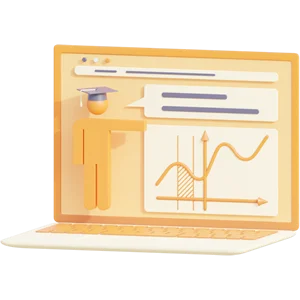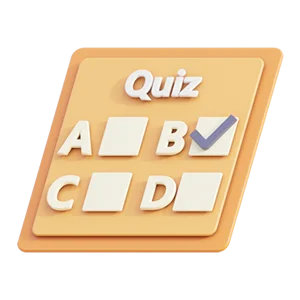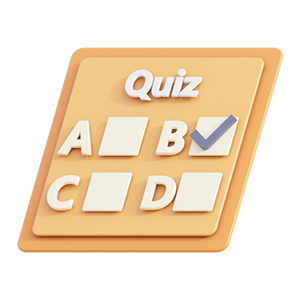ATI PN NURSING CARE OF THE CHILD FOCUSED REVIEW -LATEST GUIDE
A nurse in the pediatrician's office is checking the
Babinski reflex in a 3-month-old infant. The nurse determines
that the infant's response is normal if which of the following
findings is noted?
A The infant turns to the side that is touched.
B The fingers curl tightly and the toes curl forward.
C The toes flare and the big toe is dorsiflexed. Correct
D There is extension of the extremities on the side to which the
head is turned, with flexion on the opposite side.
□ Rationale: To elicit the Babinski reflex, the nurse strokes
the lateral sole of the foot from the heel to across the base
of the toes. In the expected response, the toes flare and the
big toe dorsiflexes. The Babinski reflex disappears at 12
months of age. Turning to the side that is touched is the
expected response when the rooting reflex is elicited. Tight
curling of the fingers and forward curling of the toes is the
expected response when the grasp reflex (palmar and
plantar) is elicited. Extension of the extremities on the side
to which the head is turned with flexion on the opposite side
is the expected response when the tonic neck reflex is
elicited.
□
□ Test-Taking Strategy: Knowledge regarding the method
of testing and the expected response of the Babinski reflex is
needed to answer this question. Recalling that to elicit
Babinski reflex the nurse would stroke the lateral sole of the
foot will direct you to the correct option. Review the
procedure for testing this reflex in an infant and the
expected response if you had difficulty with this question.
□
□ Reference: McKinney, E., James, S., Murray, S., &
Ashwill, J. (2009). Maternal-child nursing (3rd ed., p. 516). St.
Louis: Elsevier.
□
□ Level of Cognitive Ability: Analyzing
□
□ Client Needs: Health Promotion and Maintenance
□
□ Integrated Process: Nursing Process/Assessment
ATI PN NURSING CARE OF THE CHILD FOCUSED
REVIEW -LATEST GUIDE
□
□ Content Area: Newborn Awarded 1.0 points out of 1.0
possible points.
□ 2.ID: 283572974A nurse is assessing language
development in a toddler from a bilingual family. The nurse
expects that the child’s language development:
A Is slower than expected Correct
B Is developing as expected
C Is more advanced than expected
D Will require assistance from a speech therapist
□ Rationale: Although the age at which children begin to
talk varies widely, most can communicate verbally by the
second birthday. The rate of language development depends
on physical maturity and the amount of reinforcement the
child has received. Children of bilingual families, twins, and
children other than firstborns may have slower language
development. A child from a bilingual family does not require
assistance from a speech tA nurse in the pediatrician's office is checking the
Babinski reflex in a 3-month-old infant. The nurse determines
that the infant's response is normal if which of the following
findings is noted?
A The infant turns to the side that is touched.
B The fingers curl tightly and the toes curl forward.
C The toes flare and the big toe is dorsiflexed. Correct
D There is extension of the extremities on the side to which the
head is turned, with flexion on the opposite side.
□ Rationale: To elicit the Babinski reflex, the nurse strokes
the lateral sole of the foot from the heel to across the base
of the toes. In the expected response, the toes flare and the
big toe dorsiflexes. The Babinski reflex disappears at 12
months of age. Turning to the side that is touched is the
expected response when the rooting reflex is elicited. Tight
curling of the fingers and forward curling of the toes is the
expected response when the grasp reflex (palmar and
plantar) is elicited. Extension of the extremities on the side
to which the head is turned with flexion on the opposite side
is the expected response when the tonic neck reflex is
elicited.
□
□ Test-Taking Strategy: Knowledge regarding the method
of testing and the expected response of the Babinski reflex is
needed to answer this question. Recalling that to elicit
Babinski reflex the nurse would stroke the lateral sole of the
foot will direct you to the correct option. Review the
procedure for testing this reflex in an infant and the
expected response if you had difficulty with this question.
□
□ Reference: McKinney, E., James, S., Murray, S., &
Ashwill, J. (2009). Maternal-child nursing (3rd ed., p. 516). St.
Louis: Elsevier.
□
□ Level of Cognitive Ability: Analyzing
□
□ Client Needs: Health Promotion and Maintenance
□
□ Integrated Process: Nursing Process/Assessment
ATI PN NURSING CARE OF THE CHILD FOCUSED
REVIEW -LATEST GUIDE
□
□ Content Area: Newborn Awarded 1.0 points out of 1.0
possible points.
□ 2.ID: 283572974A nurse is assessing language
development in a toddler from a bilingual family. The nurse
expects that the child’s language development:
A Is slower than expected Correct
B Is developing as expected
C Is more advanced than expected
D Will require assistance from a speech therapist
□ Rationale: Although the age at which children begin to
talk varies widely, most can communicate verbally by the
second birthday. The rate of language development depends
on physical maturity and the amount of reinforcement the
child has received. Children of bilingual families, twins, and
children other than firstborns may have slower language
development. A child from a bilingual family does not require
assistance from a speech t
Preview samenvatting (3 van de 105 pagina's)
Voordelen van Knoowy
€ 17,56
 Niet tevreden? Geld terug
Niet tevreden? Geld terug
 Document direct te downloaden
Document direct te downloaden
 € 0,50 korting bij betalen met saldo
€ 0,50 korting bij betalen met saldo
-
 Ontvang gratis oefenvragen bij document
Ontvang gratis oefenvragen bij document

Specificaties
- School: Chamberlain College Of Nursing
- Opleiding: NURSING
Document
- Rubriek: Samenvattingen
- Gemaakt op: 29-07-2024
- Type: .pdf
- Pagina's: 105
- Taal: English
Tags
Verkoper
Verdienen aan je samenvattingen?
Vakken van NURSING - Chamberlain College Of Nursing
Meer NURSING ›ati comprehensive comprehensive predictor computer science fundamentals health care health care / nursing health care/ nursing healthcare hesi hesi rn exit maternal newborn med surg medical nursing medical surgical mental health nurs nursing nursing & health nutrition pathophysiology pediatrics pharmacology test bank tncc
Al meer dan 146.000 tevreden studenten
-
RaniaF
Betrouwbaar platform om kwaliteitsvolle samenvattingen te vinden en een aangename en gemakkelijke website om te gebruiken
-
Petra van Berghe
Ik vind Knoowy erg handig om samenvattingen van mijn opleiding te kopen.
-
PR
Fijne website voor elke student die hulp nodig heeft bij het leren.
-
Bente Heyrman
Het uploaden en verkopen van mijn documenten verloopt altijd super vlot, alles word eigenlijk al door Knoowy geregeld! Leuk dat medestudenten ook iets aan mijn documenten hebben!
-
sandervdellen
Knoowy is een zeer goed platform voor samenvattingen en ik zou het aanraden.
-
joannavoortman
Een handige site voor het aankopen van samenvattingen voor examens.
-
Naya
De website is gebruik vriendelijk, je krijgt meteen de samenvatting na de betaling. Aanbevolen!
-
EBELMANS
Prima ervaring, vlotte betaling, alles vlot kunnen downloaden Zeker voor herhaling vatbaar.
 Actie: ontvang 10% korting bij aankoop van 3 of meer items!
Actie: ontvang 10% korting bij aankoop van 3 of meer items!
Actie: ontvang 10% korting bij aankoop van 3 of meer items!









